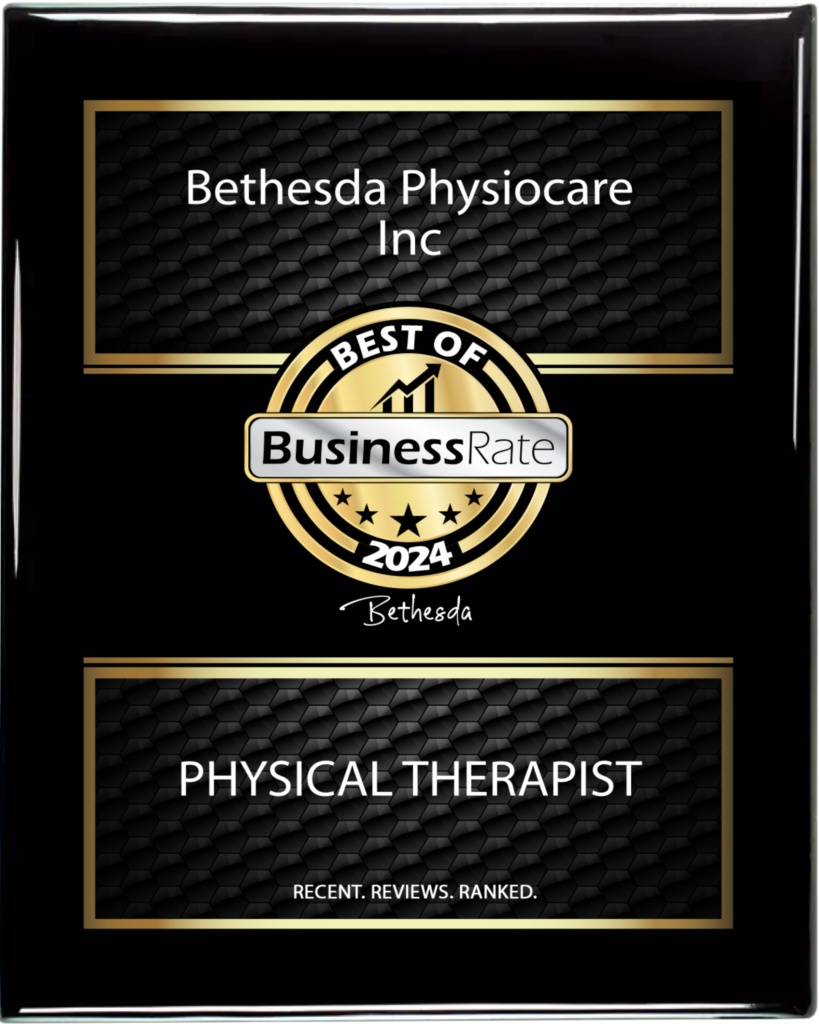
For many people, the idea of strength and flexibility being opposed to each other makes intuitive sense. Most people don’t expect a bodybuilder to get into a full split and equally can’t imagine a gymnast performing a huge barbell squat. If you’ve ever worked on your strength or flexibility, you may have even noticed the other category diminishing somewhat.
But does it have to be this way? Can one only rise as the other falls, or can you improve both at the same time? In our latest Bethesda Physiocare blog, we delve into flexibility, strength, and the link between the two.
A Quick Primer On Strength & Flexibility
To have a proper discussion about this topic, it helps to properly define our terms.
Strength is the ability to activate muscle motor neurons and their fibers to generate force in a specific way. Put simply, your muscles can use force. This may seem like a broad definition, but several types of strength fit within it. Even within these categories, there are sub-categories that further complicate what strength is. This is why, when creating a regimen to build strength, it’s crucial to decide what kind of strength you want to actually build.
Flexibility, just like strength, is much more complicated than its conventional usage would suggest. Flexibility is the ability of a joint or joints to access an unrestricted range of motion or ROM. Flexibility is also related to the length of muscles across joints that induce flexible motion.
Basic flexibility can typically be broken down into three categories: dynamic, static-active, and static-passive. Dynamic flexibility is concerned with the flexibility of joints during dynamic movements, making it most important during movement-heavy sports like football, tennis, etc. Static-active flexibility focuses on flexibility only with the muscles of a particular joint, where static-passive utilizes an external force to stretch.
Why Flexibility & Strength Don’t Seem To Mix
Just by looking at the definitions of strength and flexibility, it’s easy to see why they don’t seem to mix. When many people workout for strength, muscles tend to feel tight, which would directly impede range of motion.
Conversely, stretching to improve range of motion usually doesn’t seem to help very much when increasing strength directly. Strength usually comes when the muscle is challenged to produce force, but stretching doesn’t normally produce force in the same way that strength training does. So can the two be mixed?
Strength & Flexibility Can Go Together!
You’ll be happy to know that you can actually be flexible and strong! In fact, the two actually go hand-in-hand when creating a base of fitness. Athletes such as gymnasts, wrestlers, and martial artists often need both to be the best in their sport.
But why does it always seem like they are diametrically opposed? Normally, the issue is much more related to programming than inherent physiological processes. As most PTs and sports trainers will tell you, programming can ensure that strength and flexibility can rise together with a well-thought-out and executed plan.
In general, the key to increasing strength or flexibility without sacrificing the other is to incorporate both. When people begin a strength regimen and notice their flexibility going down, it can often be attributed to improper stretching and management.
So does that mean that you need a fully planned flexibility regimen to go with your strength? Not necessarily, though it could help (as long as there is room for adjustment/recovery).
The benefits of strength and flexibility are indisputable as well. Higher flexibility and strength are associated with slower bone and muscle loss as well as better performance in daily tasks and athletic movements. This, in turn, normally correlates to a lower chance of injury overall.
Simple Steps To Build Strength and Flexibility Together
While the best way to boost your strength and flexibility together is to work with professionals, there are some easy tips and tricks you can use to develop in both areas of fitness.
Be Consistent
For many people, their #1 issue is simply a lack of consistency. Like with many things in life, small but consistent effort normally pays off more reliably than short bursts of effort. If you want to see results in your own fitness journey, you will want to stay motivated and consistent until you reach your goal and beyond.
Blend Stretching & Strength
Another tip is to perform eccentric strengthening exercises. This is performed by contracting a muscle while it is lengthening. A good example of this is the straight leg deadlift to increase hamstring flexibility. Research has shown eccentric strengthening superior to static stretching in respect to improving flexibility/ROM.
Vary Your Exercises
A third way to improve your fitness is to vary your exercises if possible. If you only use the same exercises and don’t “confuse” your muscles, your progression could plateau. One way to accomplish this is to simply have a different exercise regimen every one to two weeks. By switching it up, you can promote a more well-rounded progression in both flexibility and strength.
Let Bethesda Physiocare Help You Reach Your Goals
If you’re ready to improve your physical fitness, Bethesda Physiocare is ready to help. We have top-notch physical therapists that can help with any sports or fitness-related injuries, as well as guide you on the path to better overall fitness.



